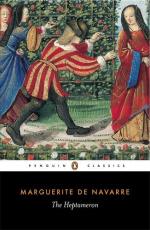|
This section contains 8,813 words (approx. 30 pages at 300 words per page) |

|
SOURCE: “‘Voylà, mes dames …’: Inscribed Women Listeners and Readers in the Heptameron,” in Critical Tales: New Studies of the Heptameron and Early Modern Culture, edited by John D. Lyons and Mary B. McKinley, University of Pennsylvania Press, 1993, pp. 104-22.
In the following essay, Bauschatz contends that the Heptameron is primarily directed at a female audience, and this intention is reflected in a disruption of the traditional narrative structure.
Many critics of the Heptameron have appeared frustrated or baffled in their attempts to find a coherent and unified message in the book. Rather than reaching any sort of closure, the stories succeed each other in a narrative process, often seeming to cancel out each other's meaning. Thus the message, if any, to be derived from the book appears ambiguous at best.1 One way out of this impasse may be to look at stylistic patterns which repeat throughout the collection...
|
This section contains 8,813 words (approx. 30 pages at 300 words per page) |

|


